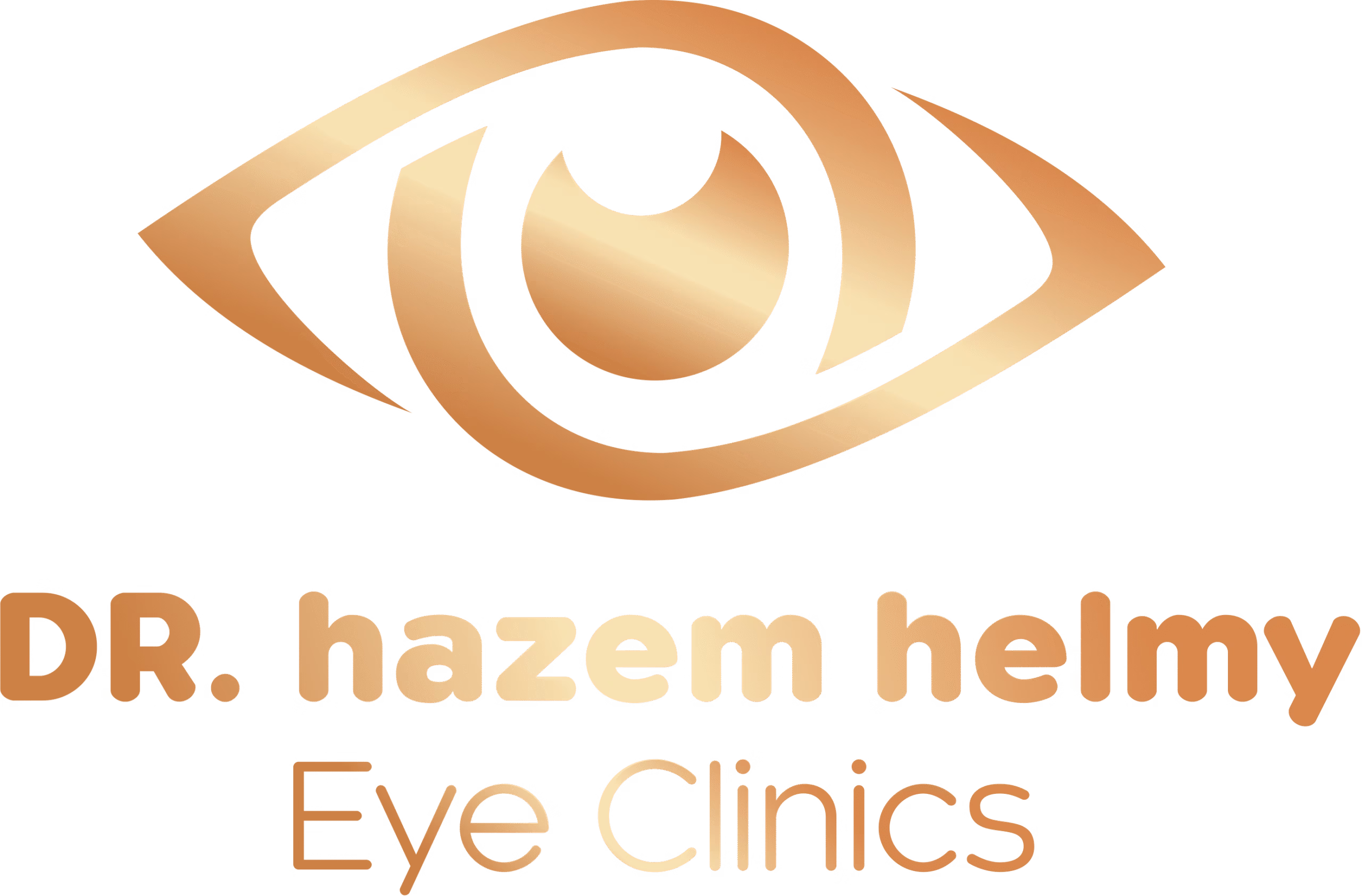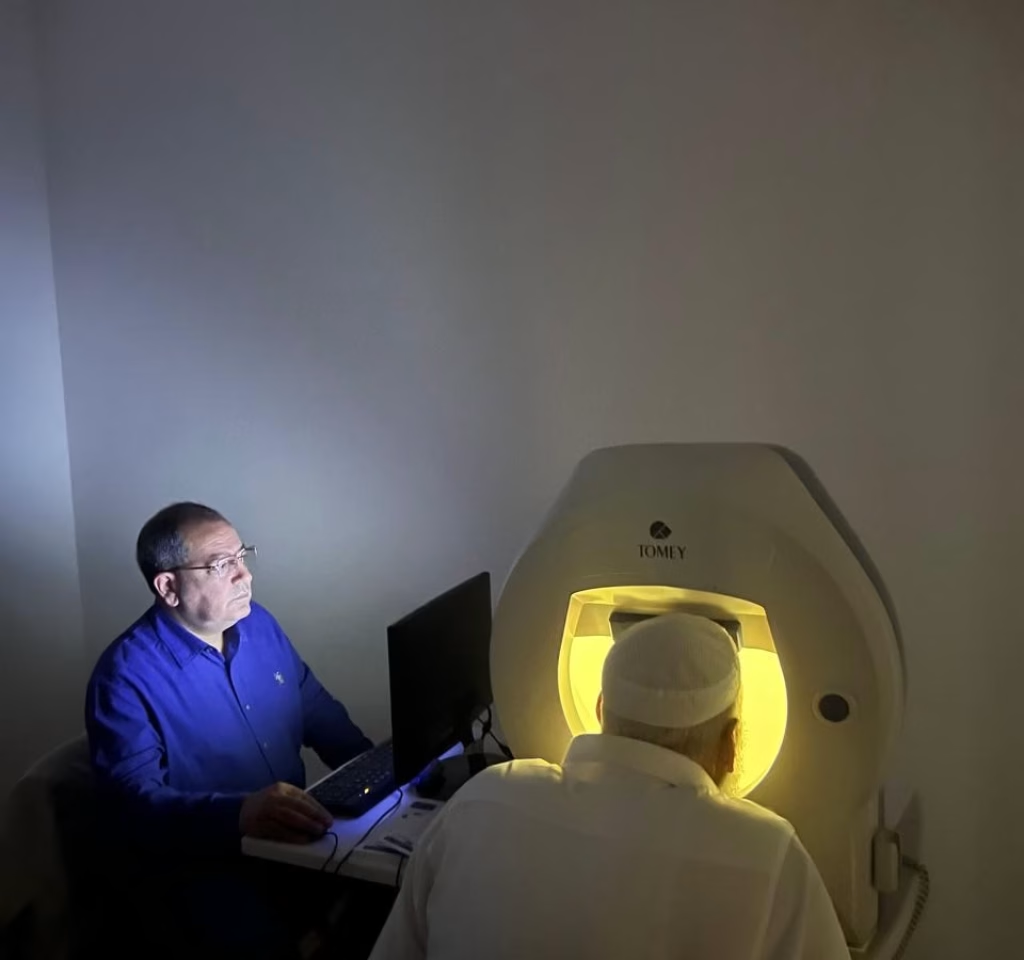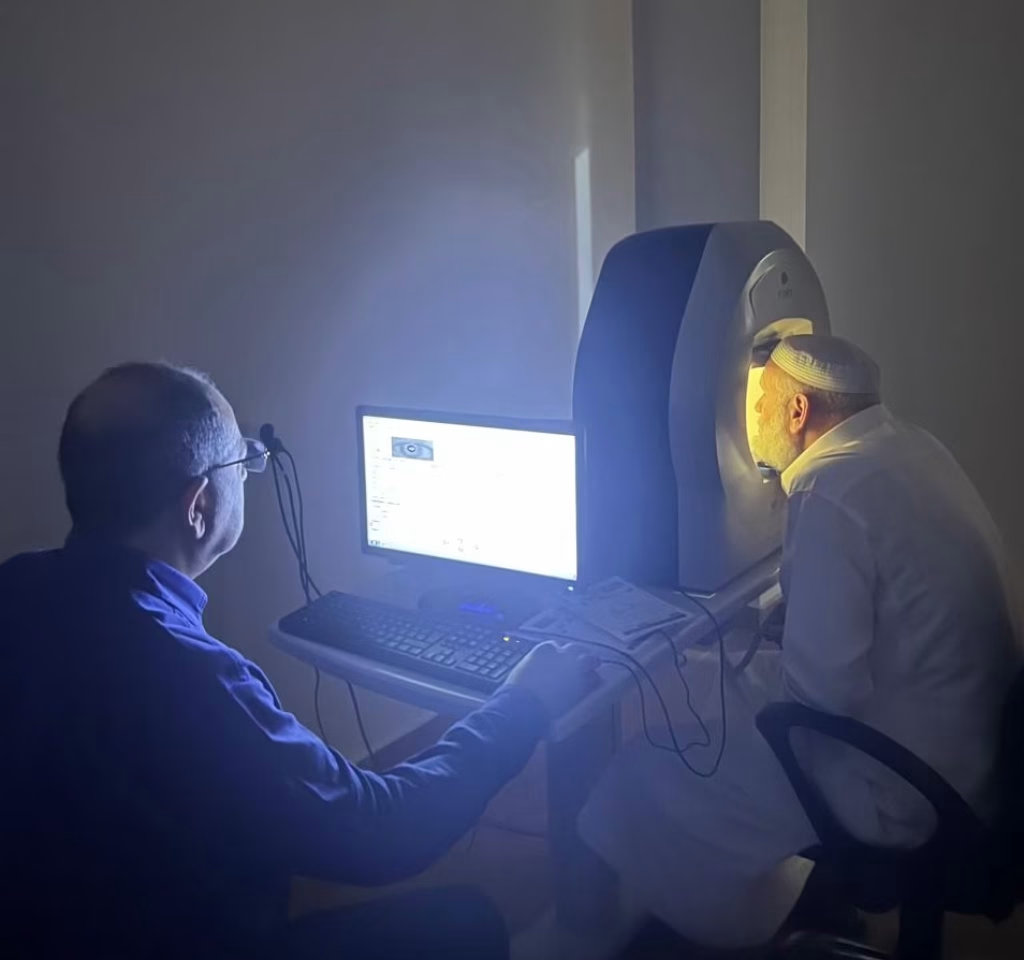
Application of the latest international protocols in the treatment of various diseases of the optic nerve
Application of the latest international protocols in the treatment of various diseases of the optic nerve
العصب البصري هو المسؤول الرئيسي عن نقل الصورة من العين إلى الدماغ، وأي خلل فيه قد يؤدي إلى ضعف أو فقدان دائم في الرؤية. ومع التقدم العلمي الكبير في السنوات الأخيرة، أصبح من الممكن اليوم تشخيص وعلاج أمراض العصب البصري بدقة أعلى وكفاءة أكبر، بفضل البروتوكولات العالمية الحديثة التي يُطبقها الأستاذ الدكتور حازم حلمي في مركزه الطبي.
ما هي أمراض العصب البصري الشائعة؟
التهاب العصب البصري
ضمور العصب البصري
ارتفاع ضغط العين المؤثر على العصب (الجلوكوما)
الاعتلال العصبي البصري الناتج عن أمراض مزمنة (مثل السكري وارتفاع الضغط)
أمراض العصب الوراثية أو الناتجة عن نقص التروية الدموية
كيف تساعد البروتوكولات العالمية في تحسين التشخيص والعلاج؟
Dr. Hazem Helmy relies on الأسس الإكلينيكية الحديثة المعتمدة دوليًا من جمعيات طب العيون الأوروبية والأمريكية، والتي تشمل:
1. تشخيص متقدم ودقيق
استخدام أجهزة OCT الحديثة لتصوير طبقات العصب البصري بدقة ميكرونية
فحص مجال الرؤية (Visual Field) لمتابعة مدى تأثر العصب
تقييم التوصيل العصبي وسرعة الاستجابة (VEP)
تحاليل مخبرية وتصوير بالرنين عند الحاجة لاستبعاد أسباب عصبية أخرى
2. خطط علاجية مخصصة لكل مريض
كل حالة من أمراض العصب البصري تختلف عن الأخرى، لذلك يُطبّق الدكتور حازم حلمي بروتوكولات علاجية مصممة خصيصًا لكل مريض بناءً على:
نوع المرض ومدى تأثيره على الرؤية
السبب الكامن (التهاب – مناعي – ارتفاع ضغط – نقص تغذية)
سرعة التدهور في العصب
الحالة الصحية العامة للمريض
3. علاجات دوائية وحديثة متعددة
كورتيزون موضعي أو عام لعلاج الالتهابات
أدوية مناعية لحالات العصب البصري المناعي
دعم التغذية العصبية بمكملات محددة علميًا
تنظيم ضغط العين في حالات الجلوكوما المصاحبة
4. متابعة دورية بأحدث المعايير
جداول متابعة منتظمة لتقييم تحسن أو تدهور الحالة
إعادة فحص الـ OCT ومجال الرؤية كل 3 إلى 6 أشهر
التعديل المستمر للعلاج بناءً على نتائج المتابعة
- أحدث البروتوكولات العالمية لعلاج أمراض العصب البصري
أ. علاج المياه الزرقاء:
القطرات الدوائية: مثل Prostaglandin Analogues وBeta-Blockers لتقليل إنتاج السائل النقي داخل العين.
العلاج بالليزر: مثل Laser Trabeculoplasty لتحفيز تصريف السائل النقي.
الجراحة: مثل Trabeculectomy أو زرع أجهزة تصريف داخل العين لتقليل الضغط الداخلي.
ب. علاج التهاب العصب البصري:
الكورتيكوستيرويدات: تعتبر الخيار الأول لعلاج الالتهابات الحادة.
الأدوية المناعية: مثل Immunosuppressants لعلاج الحالات المرتبطة بالأمراض المناعية الذاتية.
العلاج بالتبريد (Plasmapheresis): إزالة الأجسام المضادة الضارة من الدم لتحسين وظيفة العصب البصري.
ج. علاج ضمور العصب البصري:
العلاج الدوائي: مثل الأدوية المضادة للأكسدة لحماية الألياف العصبية المتبقية.
العلاج الجيني: دراسات حديثة تبحث في استخدام العلاج الجيني لإصلاح الخلايا التالفة.
الخلايا الجذعية: تجارب سريرية تدرس إمكانية استخدام الخلايا الجذعية لإعادة بناء الأنسجة التالفة في العصب البصري.
د. علاج اعتلال العصب البصري السكري:
التحكم في السكري: الحفاظ على مستويات السكر في الدم ضمن النطاق الطبيعي.
حقن Anti-VEGF: لتقليل تسرب الأوعية الدموية ونمو الأوعية غير الطبيعية.
الليزر: مثل Panretinal Photocoagulation لمنع تطور المرض.
هل يمكن استعادة النظر بعد تلف العصب؟
🔹 إذا كان التلف في بدايته، يمكن وقف التدهور وتحقيق تحسن ملحوظ في بعض الحالات. أما التلف الدائم الكامل، فغالبًا لا يُمكن استعادته، مما يُبرز أهمية التشخيص والعلاج المبكر.
هل تتوفر علاجات جديدة أو تجريبية للعصب البصري؟
🔹 يتابع الدكتور حازم حلمي أحدث ما يُنشر في الأبحاث العلمية ويُطبق المعتمد منها سريريًا، بما في ذلك بروتوكولات التغذية العصبية، والأدوية المناعية الدقيقة، والعلاجات الداعمة للبصر.
هل تعاني من ضعف مفاجئ في الرؤية أو شكوك في صحة العصب البصري؟
لا تتردد في حجز استشارة متخصصة مع الدكتور Hazem my dream لتشخيص الحالة بدقة ووضع خطة علاجية وفقًا لأحدث المعايير الدولية.
Frequently asked questions
The latest technologies used in the treatment of cataracts and glaucoma rely heavily on improving accuracy and reducing the risks associated with conventional surgeries. The following are the most prominent of these technologies:
- 1. Cataract treatment:
- Femto-laser (Femtosecond Laser): femtosecond laser technology is used to create a small hole in the cornea, and then the blurry lens is atomized using high-precision laser beams before being sucked and removed. This method is considered among the most accurate and safe compared to traditional methods.
- Phaco apparatus (Phacoemulsification): this technique is based on ultrasound to break up the cataract lens and remove it through a very small incision (about 2-3 millimeters), which helps to speed up the recovery process and reduce complications.
- Smart lensesAfter removal of the affected lens, advanced artificial lenses such as multifocal Lenses (Multifocal Lenses) or adaptive lenses (Accommodative Lenses) are implanted, which provide clear vision at various distances (close, medium, far).
- Treatment of glaucoma:
- Precision dual-pulse laser (Micropulse Diode Laser): This device is one of the latest means used in the treatment of glaucoma, as it improves the drainage of intraocular fluid without the need for major surgery, which helps to effectively reduce intraocular pressure .
- Technical Trabeculoplasty: This technique uses a laser to stimulate the drainage of intraocular fluid, which is a quick and effective way to relieve pressure on the optic nerve.
- Liquid drainage surgery (Trabeculectomy): In severe cases that do not respond to laser therapy or medications, surgery is performed to drain the intraocular fluid to permanently relieve pressure.
- Implanted liquid drainage devices (Glaucoma Drainage Devices): Small intraocular devices are implanted to improve fluid drainage and continuously lower pressure.
- Common techniques:
- Three-dimensional imaging (3D Imaging): Three-dimensional imaging is used to accurately assess and plan the condition of the eye before surgery, which helps the surgeon to choose the best type of artificial lens for each patient based on his individual condition .
- Surgical robots: Surgical robots are used in complex operations to provide unprecedented accuracy, reducing the risks associated with conventional surgery and enhancing overall results.
- Future directions:
- Clinical trials are underway to test new technologies such as the use of stem cells or gene therapy for the treatment of glaucoma and cataracts, which may provide more effective solutions in the future.
From the above, modern technologies such as Femto-laser, phaco, and MicroPulse diode laser are among the latest means used to treat cataracts and glaucoma. These techniques are aimed at improving the results of surgical operations, reducing risks and complications, leading to a faster recovery and better restoration of vision.
The latest studies on the use of stem cells in the treatment of eye diseases indicate the presence of promising prospects in the restoration of eyesight and the treatment of degenerative conditions that were considered incurable in the past. The following are the most notable recent results and trends:
- The use of stem cells for the treatment of degenerative diseases of the retina:
- Clinical trials using induced pluripotent stem cells (iPSCs) in the treatment of diseases such as age-related macular degeneration (AMD) and diabetic retinopathy have been declared successful .
- This technique is based on stimulating stem cells to produce new cells that can replace damaged cells in the retina, which leads to the restoration of visual function.
- Stem cell injections for tissue regeneration:
- Recent studies have shown that intraocular stem cell injections can help regenerate damaged tissues, especially in cases of loss of pigment epithelial cells or retinal neurons.
- This technique is aimed at preventing the progression of the disease and stimulating the natural healing process.
- Treatment of cataracts using stem cells:
- Scientists have removed cataract-infected lenses and used stem cells naturally present in the eye to stimulate the production of a healthy new lens.
- This method is considered a revolution in the field of cataract surgery, as it reduces the need for implantation of artificial lenses.
- 4. The use of stem cells for the treatment of glaucoma:
- There are experiments that suggest that stem cells may be effective in repairing damaged tissue in the optic nerve caused by glaucoma.
- These cells reduce intraocular pressure and improve fluid drainage, which contributes to the preservation of vision.
- Future research:
- The use of gene therapy techniques with stem cells is now being explored for the treatment of hereditary eye diseases such as nocturnal retinopathy and macular degeneration of the retina.
- These hybrid techniques aim to address the root cause of the disease rather than just managing the symptoms.
- Promising results from clinical trials:
- Clinical trials conducted in Turkey and other places showed that stem cell transplantation was safe and effective in the treatment of many degenerative diseases of the eye.
- No serious side effects have been reported so far, which makes this treatment promising for the future of Ophthalmology.


To communicate
Book now
Do you have vision problems or need an eye exam Book your appointment now with the best ophthalmologists! We provide you with high-quality medical services in a comfortable and safe environment
Working hours
- The gathering clinic: on Sundays and Tuesdays from 2 to 9 pm
- Giza clinic: Saturday, Monday and Wednesday from 5 to 11 pm

